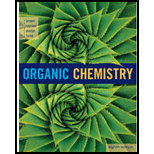
(a)
Interpretation:
The given reactions are final steps in one industrial synthesis of vitamin A acetate.
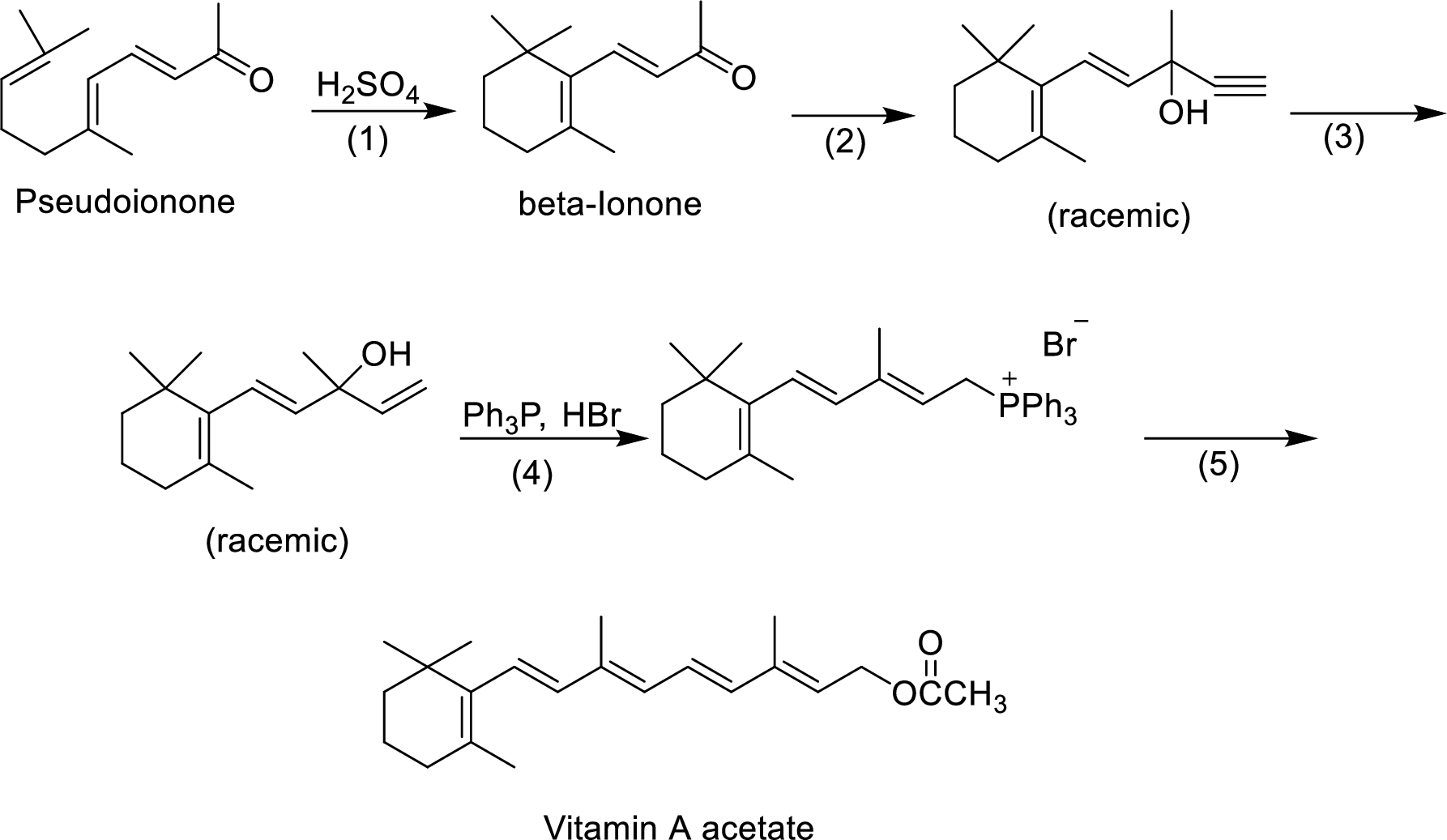
The mechanism has to be proposed for the acid-catalyzed cyclization in step-1.
Concept Introduction:
The ring cyclization occurs when an acyclic molecule reacts with acid. by the abstraction of proton from the acid molecule, internal bond shifting occurs to form the cyclization product.
(b)
Interpretation:
The given reactions are final steps in one industrial synthesis of vitamin A acetate.
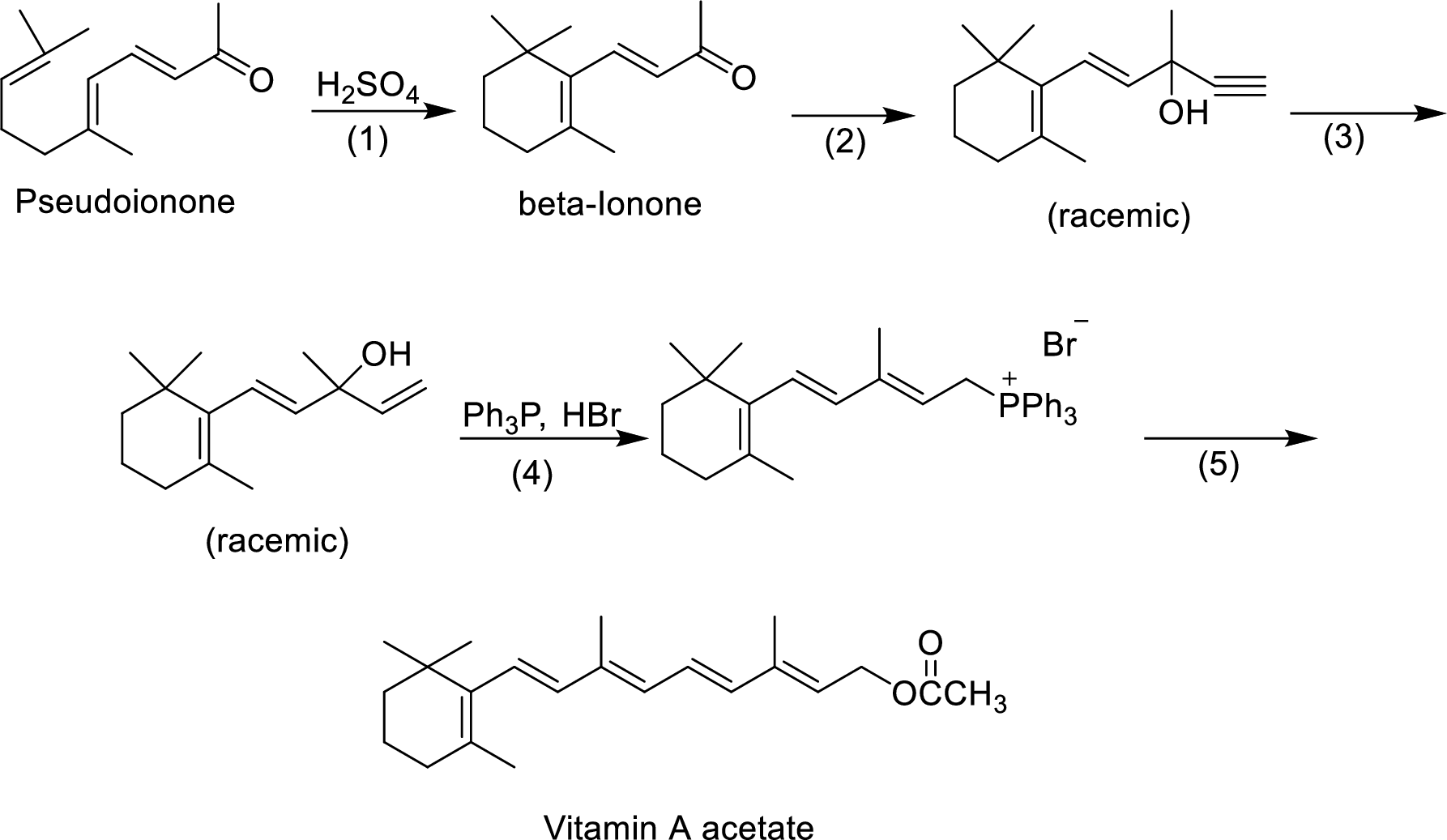
The reagents has to be given for the reaction involved in step-2.
(c)
Interpretation:
The given reactions are final steps in one industrial synthesis of vitamin A acetate.
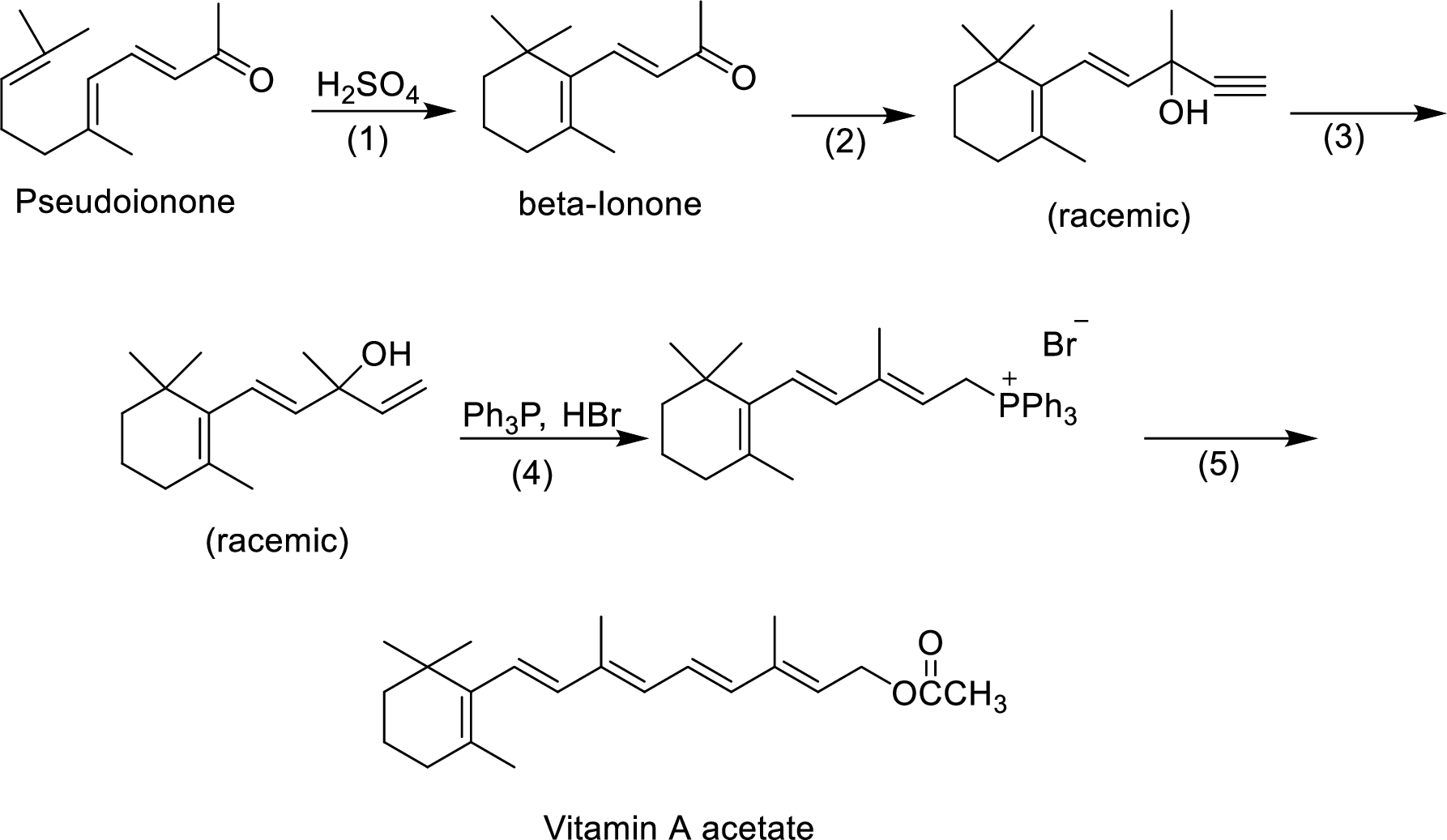
The mechanism has to be proposed for the formation of phosphonium salt in step-4.
(d)
Interpretation:
The given reactions are final steps in one industrial synthesis of vitamin A acetate.
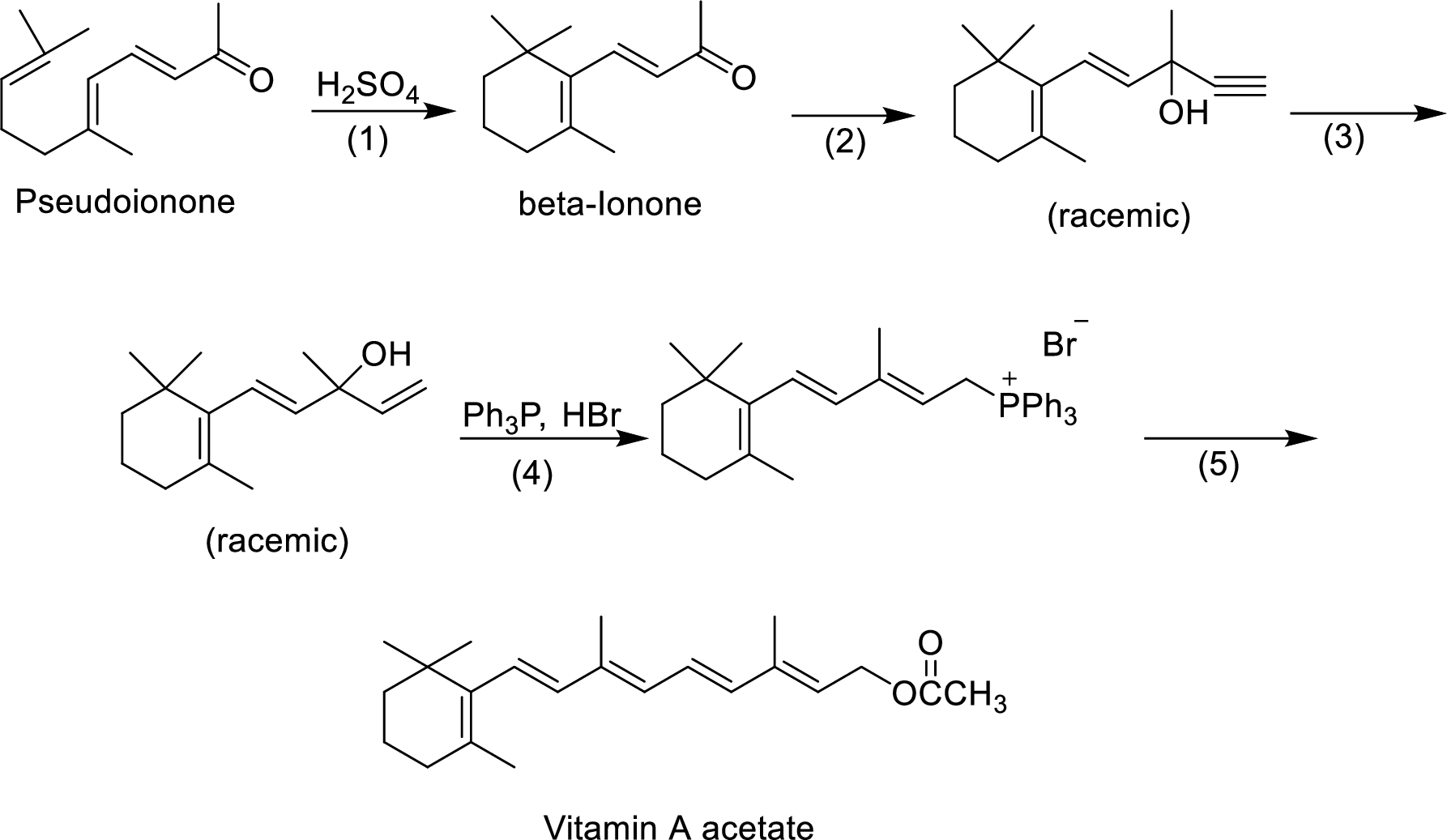
The reagents that are involved in the reaction of step-3 has to be proposed.
(e)
Interpretation:
The given reactions are final steps in one industrial synthesis of vitamin A acetate.
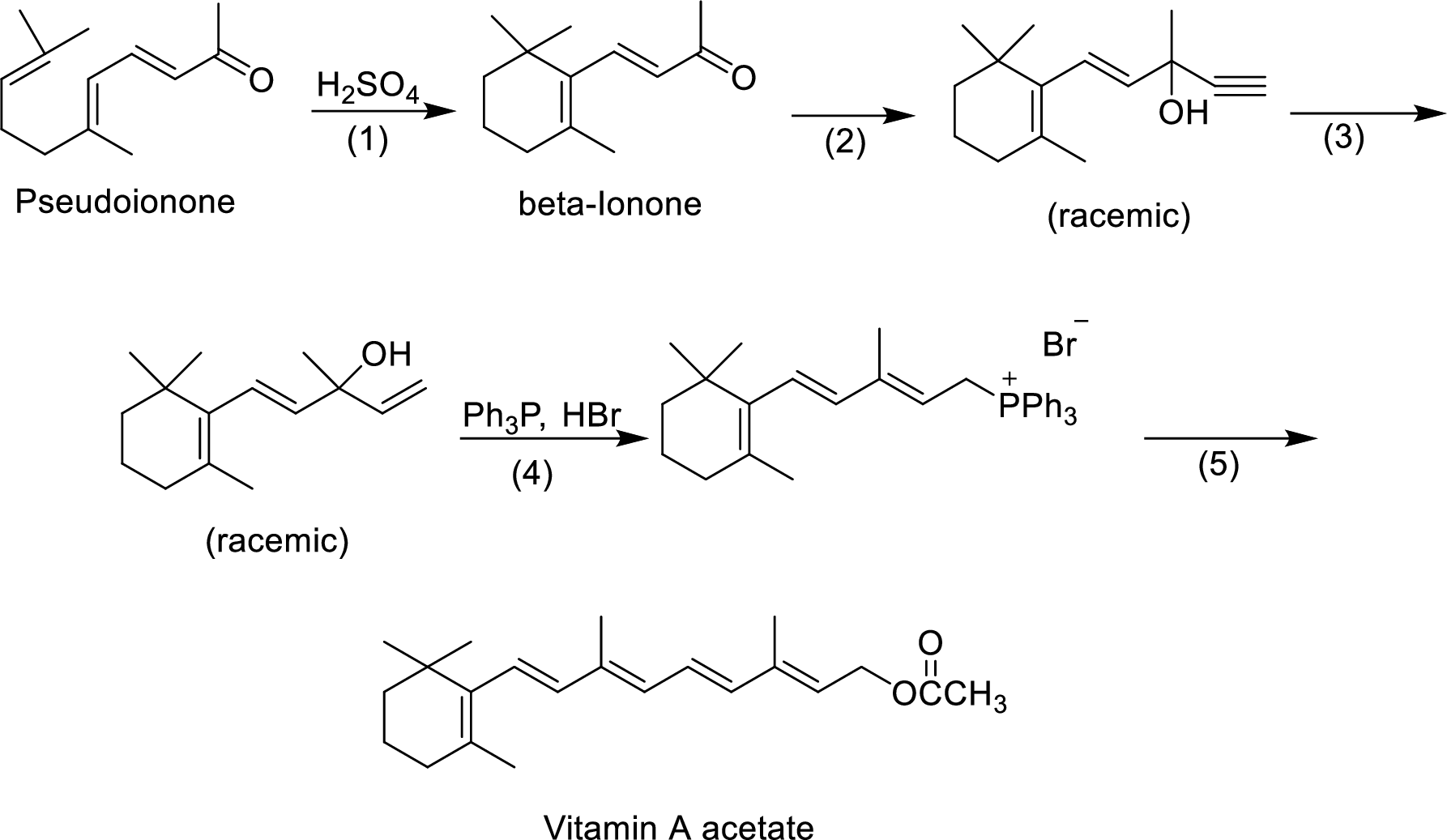
Wittig reaction of step-5 has to be shown.
Concept Introduction:
Wittig reaction:
The reaction of carbonyl compound with the ylide of phosphonium salt to give an
Trending nowThis is a popular solution!

Chapter 16 Solutions
ORGANIC CHEMISTRY-OWL V2 ACCESS
- Provide the reagents for the following reactions.arrow_forwardIf I have 1-bromopropene, to obtain compound Z, I have to add two compounds A1 and A2. Indicate which compounds are needed. P(C6H5)3arrow_forwardDraw the major product of this reaction. Ignore inorganic byproducts. Assume that the water side product is continuously removed to drive the reaction toward products. O CH3CH2NH2, TSOH Select to Draw >arrow_forward
- Indicate the products obtained by reacting fluorobenzene with a sulfonitric mixture.arrow_forwardIf I have 1-bromopropene, to obtain compound A, I have to add NaOH and another compound. Indicate which compound that would be. C6H5 CH3arrow_forwardIf I have 1-bromopropene and I want to obtain (1,1-dipropoxyethyl)benzene, indicate the compound that I should add in addition to NaOH.arrow_forward
- Draw the major product of this reaction. Ignore inorganic byproducts. Ο HSCH2CH2CH2SH, BF3 Select to Draw I Submitarrow_forwardFeedback (7/10) Draw the major product of this reaction. Ignore inorganic byproducts. Assume that the water side product is continuously removed to drive the reaction toward products. Incorrect, 3 attempts remaining Ο (CH3CH2)2NH, TSOH Select to Draw V N. 87% Retryarrow_forwardIf I want to obtain (1,1-dipropoxyethyl)benzene from 1-bromopropene, indicate the product that I have to add in addition to NaOH.arrow_forward
 Organic ChemistryChemistryISBN:9781305580350Author:William H. Brown, Brent L. Iverson, Eric Anslyn, Christopher S. FootePublisher:Cengage Learning
Organic ChemistryChemistryISBN:9781305580350Author:William H. Brown, Brent L. Iverson, Eric Anslyn, Christopher S. FootePublisher:Cengage Learning

